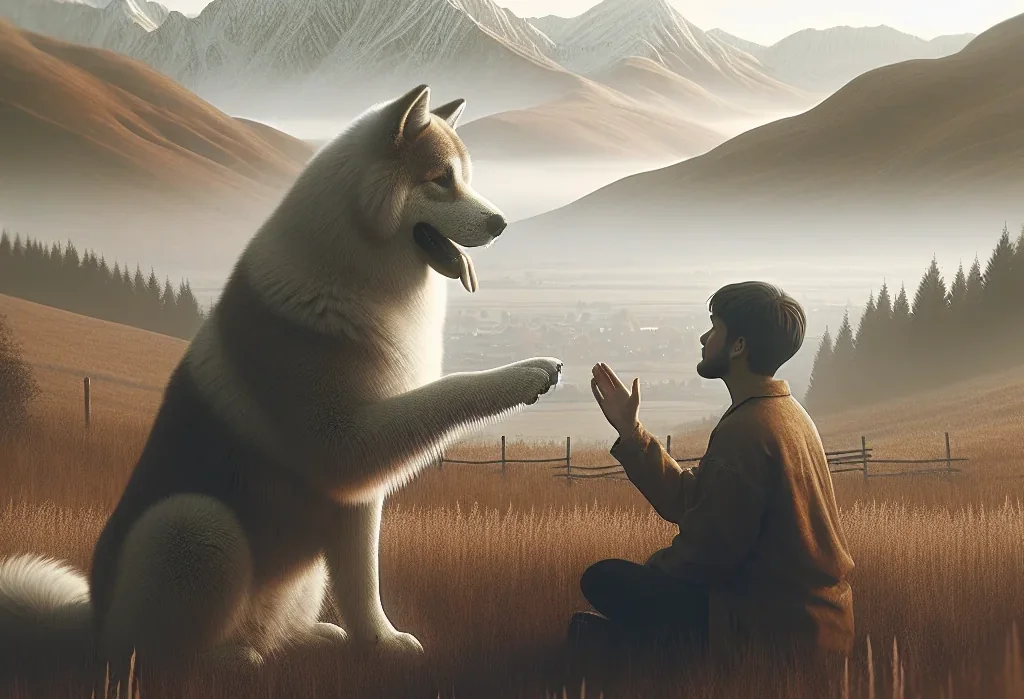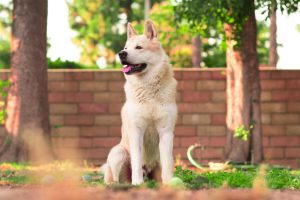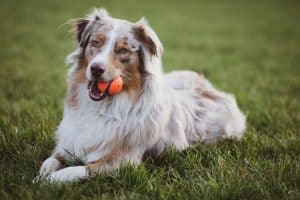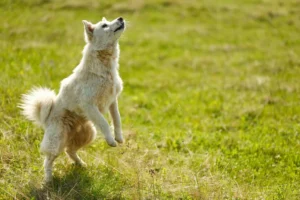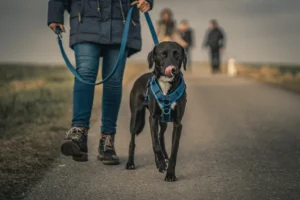It’s happened to all of us: You’re on a relaxing walk with your furry companion, and suddenly, it’s as if you’ve unleashed a friendly but overly enthusiastic dragon on innocent passersby. If your dog’s idea of a polite greeting involves a full-on Olympic sprint and a tackle, it’s time for a change.
By the end of this blog post, you’ll be equipped with simple and effective techniques to transform your beloved pet’s hellos from havoc-wreaking to heartwarming.
Key takeaways:
- Utilize basic obedience training with “sit” and “stay” commands to set a foundation for calm greetings.
- Apply positive reinforcement through treats, praise, and specific toys to encourage polite behavior.
- Ensure consistency in commands, rewards, and expectations from all family members to prevent confusion.
Why Does My Dog Jump on People?
Ever wondered why your furry friend seems to forget all about personal space, especially when new people come around?
Well, there are a few reasons your dog might be jumping up on people. First off, it’s a bundle of excitement. Imagine being so thrilled to see someone that you just can’t keep your paws to yourself. That’s your dog every time a familiar face or a potential new friend is in sight. Then there’s the attention-seeking missile mode. Dogs, much like humans, crave attention and jumping up is a surefire way to get it, even if it’s not the kind we appreciate.
Lastly, it boils down to lack of training. Without understanding what’s expected of them, dogs default to their natural instincts, and jumping is right up there with sniffing and chasing.
What Can You Do to Prepare Your Dog for Polite Greetings?
Before your dog can start charming the socks off your guests with polite greetings, there’s a bit of prep work involved. A solid foundation in basic obedience training is non-negotiable. Commands like “sit” and “stay” are not just tricks; they are essential manners for every dog. Begin in a distraction-free environment to master these commands before gradually introducing new scenarios.
Training sessions should simulate real-life situations as much as possible. For example, have a family member ring the doorbell during a session to practice calm greetings. Remember, patience and consistency are your best friends here.
Another key aspect is to maintain a calm and controlled approach to new situations. If you’re anxious or overexcited, your dog will mirror that energy. Practice calmness, and your dog will follow suit.
How Can You Use Positive Reinforcement to Encourage Polite Greetings?
Positive reinforcement is the golden ticket to teaching your dog just about anything, polite greetings included. Here’s the kicker though: while treats are a fantastic motivator, they’re not the be-all and end-all. Start with treats to catch your dog’s attention and reward initial attempts at calm behavior. Gradually, you’ll want to mix in loads of praise and pets, which are just as rewarding but don’t come with the calorie count.
An often overlooked yet incredibly effective technique is the random reward system. Once your dog starts getting the hang of polite greetings, start rewarding them at random intervals. This unpredictability encourages consistent behavior better than a treat every single time.
Here’s a unique tip : use a specific toy as a reward for polite greetings. This not only reduces dependency on treats but also gives your dog a positive outlet for their excitement. Choose a toy that’s only used for greeting scenarios to make it special. It’s a tangible reward they can look forward to after displaying impeccable manners.
Remember, transforming your eager greeter into a polite welcomer won’t happen overnight. It takes time, repetition, and plenty of love. Your efforts will pay off, leaving you with a well-mannered pup that’s a joy to come home to or take out in public. So, roll up your sleeves and get started. Your dog is eager to please—they just need to be shown how.
What Role Does Consistency Play in Teaching Polite Greetings?
Ah, consistency – the golden ticket to virtually any form of training, especially when you’re trying to teach your furry companion how to greet politely. Now, let’s break it down, shall we? In the world of dog training, consistency is like the glue that holds everything together. It transforms sporadic successes into reliable behaviors.
Firstly, it’s crucial to use consistent commands. Decide on the phrases or gestures you’ll use and stick with them. Changing commands only confuses your pooch, making it harder for them to understand what you’re asking. For instance, if you’re using “say hi” as a cue for a calm greeting, don’t interchange it with “go greet” or “say hello” – consistency is key!
Rewarding consistently plays a significant role too. Your dog needs to know they’ve hit the jackpot when they greet someone calmly, with all four paws on the ground. Whether it’s treats, praise, or a favorite toy, the reward must be immediate and linked to the desired behavior to reinforce their learning.
And here’s a little tidbit that can make or break your training efforts: everyone needs to be on the same page. That means all family members and even frequent visitors should follow the same rules when greeting your dog. Imagine the confusion if you’re teaching your dog to sit for greetings, but Auntie Jane lets your dog jump all over her because she finds it cute. Consistency across the board ensures your dog knows what’s expected, regardless of who they’re greeting.
How to Handle Setbacks and Reinforce Training?
Let’s face it – setbacks can be disheartening. One day your dog is the epitome of politeness, and the next, they’re bouncing off the walls with excitement. But fear not! Setbacks are merely stepping stones on the path to success.
When faced with challenges, such as your dog reverting to jumping up, it’s crucial to review and reinforce your training techniques. Here’s a specific example that’s often overlooked: ensure you’re rewarding your dog at their level. Bending down or kneeling to give a treat for a calm greeting encourages your dog to keep all paws on the ground, rather than jumping up to reach the reward.
Patience and persistence are your best friends here. Remember, Rome wasn’t built in a day, and your dog won’t become a greeting guru overnight. Repetition is your ally. Reinforcing training means practicing greetings under controlled conditions regularly. You could set up practice sessions where a family member or friend knocks on the door or approaches in a public setting, enabling you to reinforce the polite greeting behavior in a variety of scenarios.
Furthermore, celebrate small victories. Did your dog manage to keep two paws on the ground when they usually jump all four? That’s progress! Acknowledge and reward these moments. Positive reinforcement not only builds confidence in your dog but strengthens your bond with them.
In conclusion, navigating the journey of teaching your dog polite greetings is all about consistency, patience, and understanding that setbacks aren’t failures but opportunities for reinforcement. With a clear, consistent approach and a toolbox equipped with patience and reinforcement strategies, you’ll be well on your way to having a dog that greets everyone with impeccable manners. Remember, each dog is unique, and what works for one may need tweaking for another. Stay attuned to your dog’s responses and adjust accordingly, and you’ll both enjoy the rewarding journey of growth and learning.
Alex, a passionate animal lover, has experience in training and understanding animal behavior. As a proud pet parent to two dogs and three cats, he founded AnimalReport.net to share insights from animal experts and expand his knowledge of the animal kingdom.

